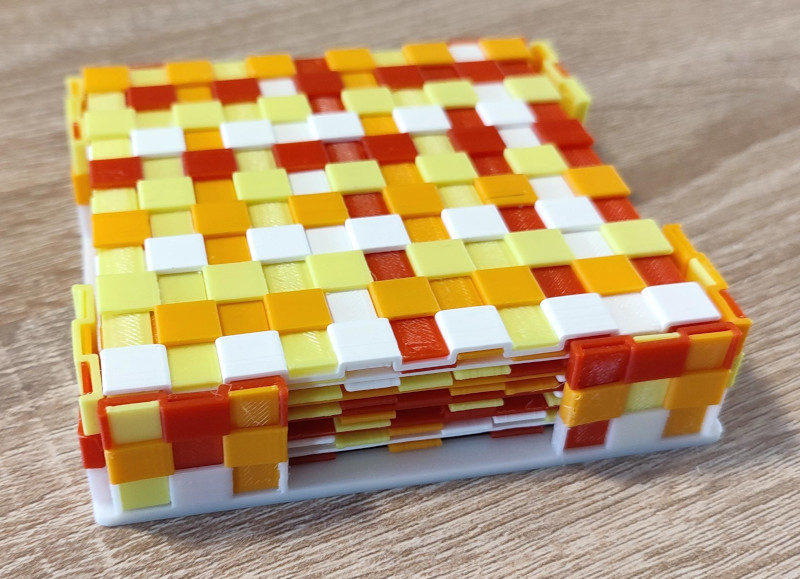When regular people think of 3D printing, they likely imagine semi-newfangled objects like twisty vases and useless trinkets. But there is so much more to 3D printing, as [andrei.erdei]’s printed, woven coasters demonstrate.
The design is based on the stake and strand basket weaving technique, which uses rigid strips called stakes in one direction and thinner strips called strands in the other. Since the flexibility of PLA is questionable, [andrei] printed the stakes already bent in a square wave pattern that accommodates the strands fairly easily. To tie the coasters together and make them look more polished and commercial, [andrei] designed a holder as well.
The awesome thing about this technique is that you can do so much with it, like varying the stakes’ widths or making them diagonal instead of square. [andrei] designed these in Tinkercad using Codeblocks; of course, they are open source. Be sure to check out the assembly video after the break.















Awesomely interesting topic, from the greatest writer here.
You forgot /s
These coasters aren’t going to save your table- any condensation from the glass will run down between the plastic pieces and end up on the table. Coasters should be able to contain that liquid.
These were probably printed using PLA which means you’ll have to wash them manually, with cold water, or risk deforming/melting the plastic.
I print coasters using TPU filament that provides a “soft” landing for your glass, and contains the condensate that drips off it so it doesn’t end up on the table. When they need to be cleaned, just put them in the dishwasher and they come out looking like new.
https://photos.app.goo.gl/4N7ksKyr5Z5MowA86
Or you could be like me and just simply not care in the first place, thereby rendering all those concerns irrelevant.
I appreciate that this is a good demonstration of the possibilities with 3d printing, if – like old CDs – not necessarily an optimal coaster.
Agreement: lousy coaster for practicality, but pretty cool for showing off what an FDM printer can do.